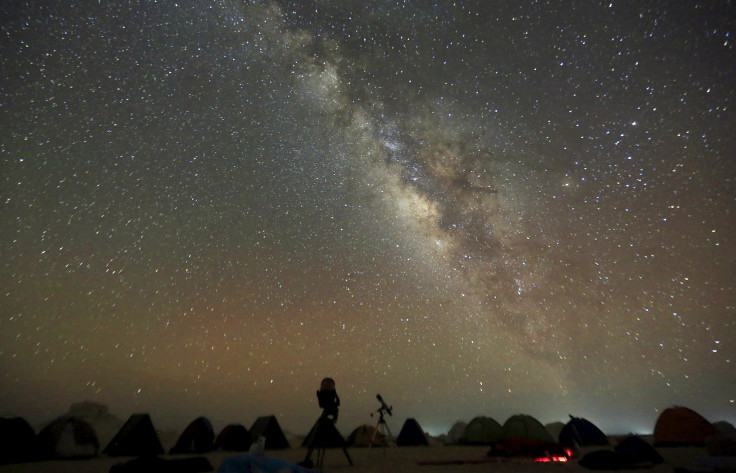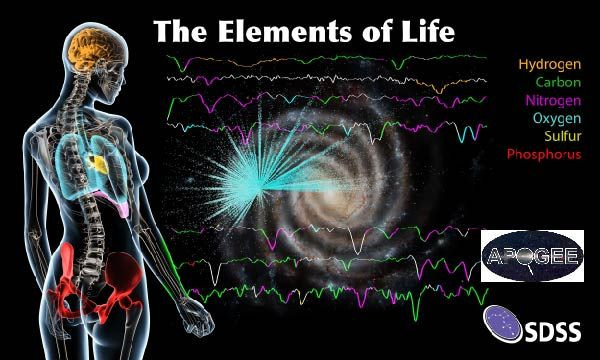Astronomers Map The Elements Of Life Across The Milky Way

“If you wish to make an apple pie from scratch, you must first invent the universe,” Carl Sagan once famously said. What’s true for an apple pie, is true for the human body — we are, after all, made of starstuff.
Now, a team of astronomers has, using the Sloan Digital Sky Survey’s (SDSS) Apache Point Observatory Galactic Evolution Experiment (APOGEE) spectrograph, created a catalog of two dozen of this elemental starstuff across 150,000 stars in the Milky Way. This catalog, freely available online here, includes all of the so-called “CHNOPS elements” – carbon, hydrogen, nitrogen, oxygen, phosphorous and sulfur — known to be the building blocks of all life on Earth.
“For the first time, we can now study the distribution of elements across our Galaxy,” Sten Hasselquist, an astronomer at New Mexico State University, who was involved in the survey, said in a statement released Thursday. “The elements we measure include the atoms that make up 97 percent of the mass of the human body.”

In order to map the distribution of these elements, the scientists observed and analyzed the light spectra of hundreds of thousands of stars. Given that each element creates its own distinctive pattern of dark and bright patches in the spectra, this allowed the astronomers to work out the concentration of various elements in each star.
“By working in the infrared part of the spectrum, APOGEE can see stars across much more of the Milky Way than if it were trying to observe in visible light,” Jon Holtzman, also from the New Mexico State University, said in the statement. “Infrared light passes through the interstellar dust, and APOGEE helps us observe a broad range of wavelengths in detail, so we can measure the patterns created by dozens of different elements.”
In addition to furthering our understanding of the structure of our galaxy — information that can help us comprehend its past and predict its future — the catalog can also help narrow down our search for life — or at least life as we know it. For instance, the catalog confirms that most of the so-called elements of life were synthesized earlier in the inner, older parts of the galaxy than in the outer parts.
“It’s a great human interest story that we are now able to map the abundance of all of the major elements found in the human body across hundreds of thousands of stars in our Milky Way,” Jennifer Johnson from the Ohio State University said in the statement. “This allows us to place constraints on when and where in our galaxy life had the required elements to evolve, a sort ‘temporal Galactic habitable zone.’”
© Copyright IBTimes 2025. All rights reserved.






















